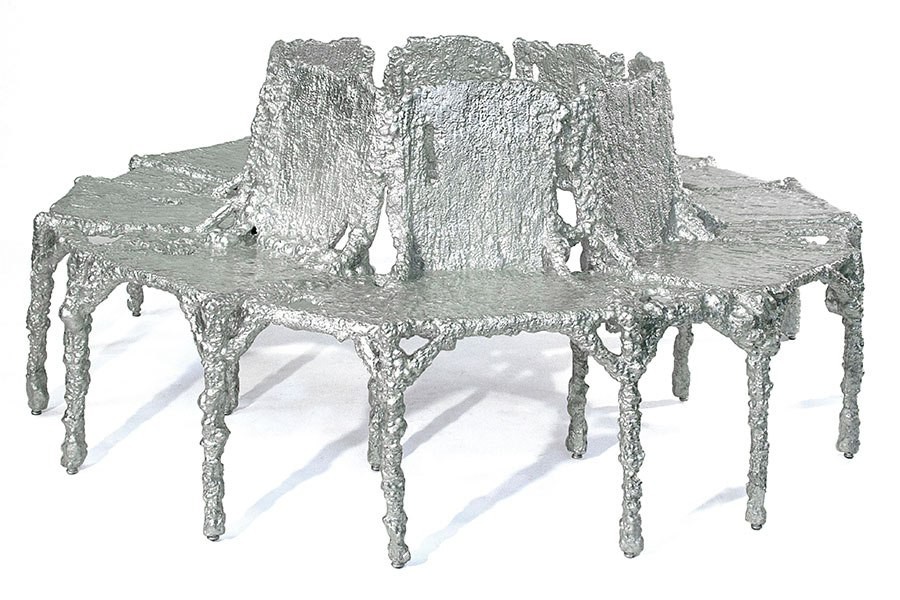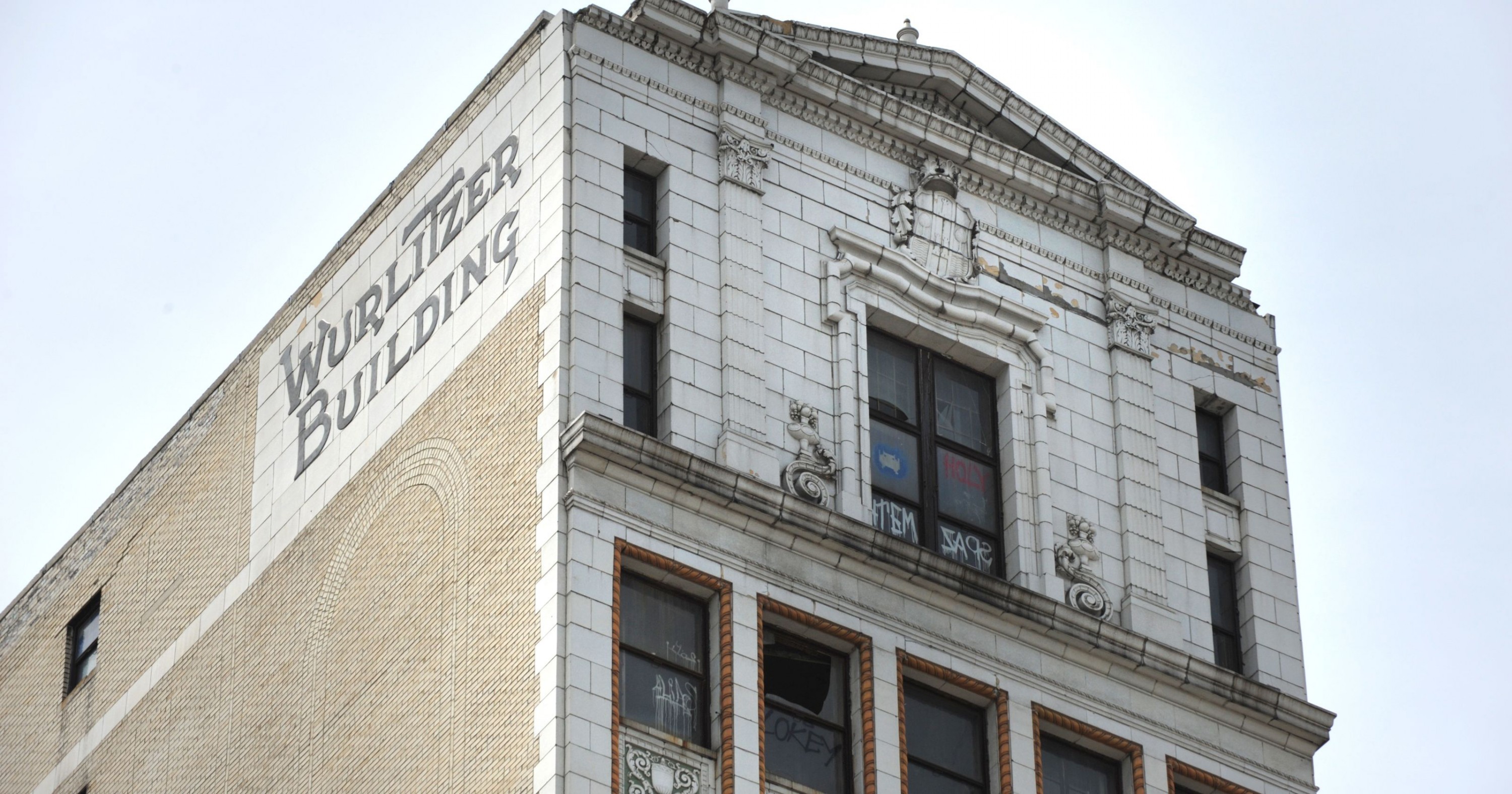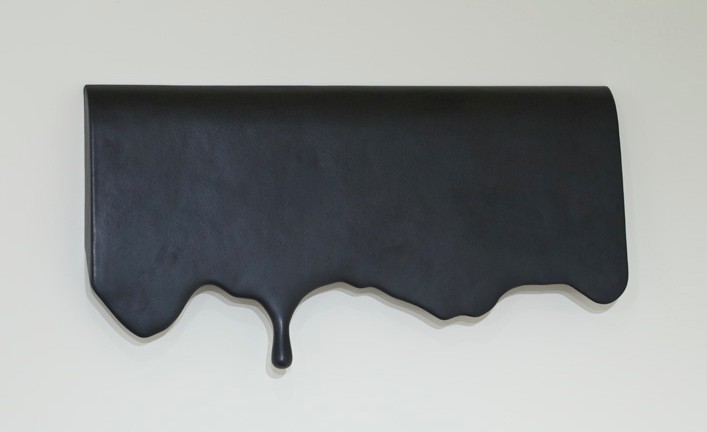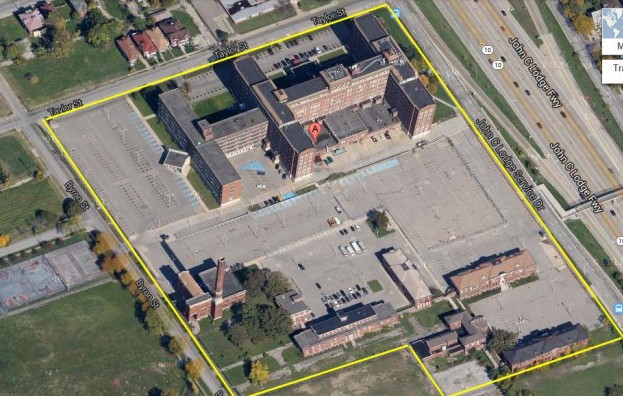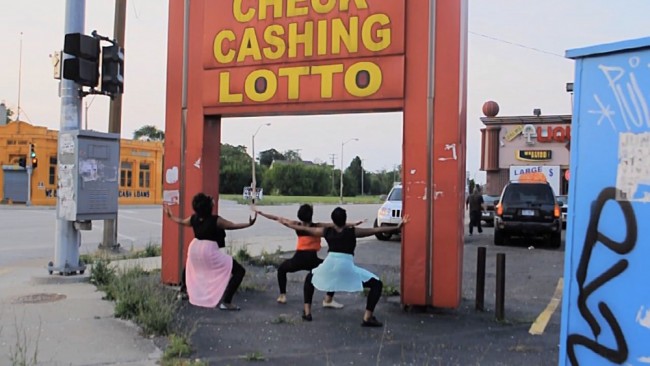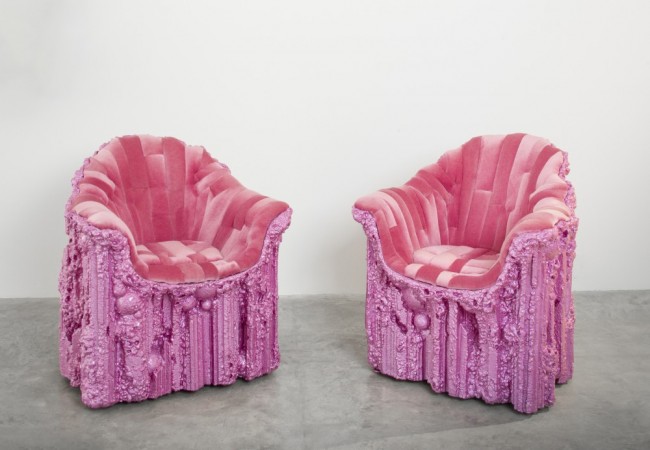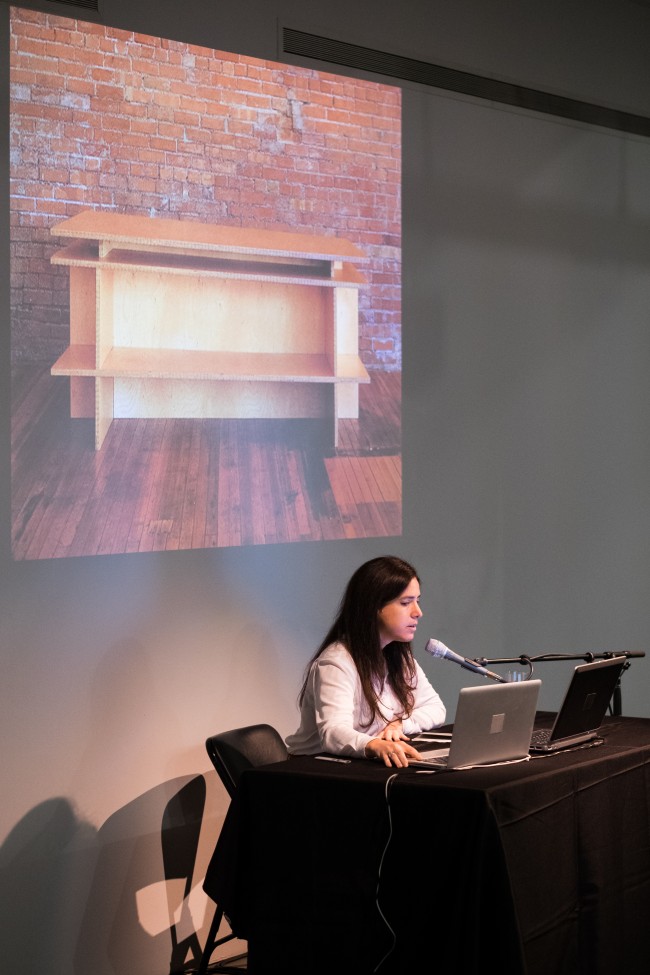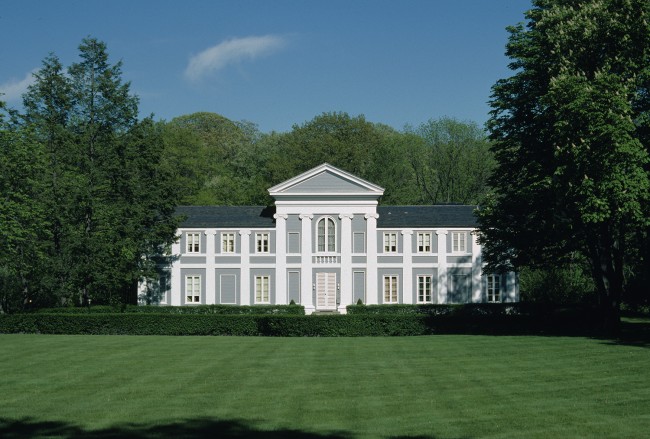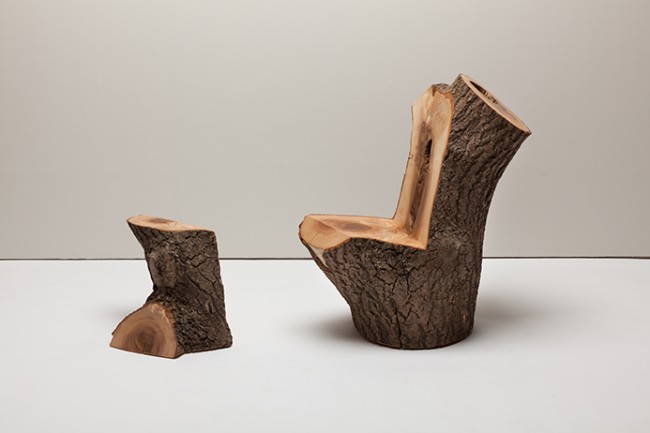DESIGN COLUMN #1: DETROIT VANGUARD
Hello PIN–UP readers!
There are many Detroit clichés: the empty, graffitied streets, the eroding buildings, the burnt-out houses with spent whippets on the sidewalk, that overall feeling of loss and disillusionment. But Detroit’s economic rock bottom has also produced an unexpected ground zero of bold architecture, development, and experimental design. I discovered this during a recent trip through encounters with just a few of the Motor City’s most inspiring gentlemen.
Phillip Cooley, the unofficial Mayor of Corktown, a cultural hub just west of Downtown Detroit, was one of the first to start organizing happenings in abandoned real estate. His not-for-profit Ponyride provides studio and industrial space for Detroit’s most progressive businesses like Anthology Coffee (dark and bracing) and Detroit Denim (also dark and bracing). Cooley is a local celebrity. Madonna and Michael Bolton recently toured Ponyride. (Not together, I am told.) Bolton serenaded the seamstresses constructing sleeping-bag coats for the homeless. (Madonna did not.) Cooley also has the strongest food game in town with Slows Bar BQ, the number one recommended BBQ joint in Detroit (and my first stop off the plane). Right next door is Gold Cash Gold, a former pawnshop where he hosts weekly “Oysters for Equality” events that create awareness for the gender pay gap by giving women a 23 percent discount. Choice items on the menu include: pork-fat infused Old Charter Bourbon, Smith and Cross navy-strength rum, and earl-grey infused Beefeater gin. Oh, and the fluffiest potato and bacon pierogi I’ve ever sunk my teeth into. You absolutely must go.
In Detroit, design is the discipline of kings. From Kawasaki to Cranbrook, the city is full of past and future icons. Among its contemporary design royalty is Chris Schanck (a Peter Marino favorite) who has set up a home-cum-studio in Detroit’s Hamtramck neighborhood where a team of Ivy League millennials sit together with saried Bengali mothers hand-forming web-like alu-foil furniture. Schanck’s house is bright and open with cats and MacBooks and delicate drawings scattered over draft tables. Colored flakes of sheet aluminum float through the air like motes catching the light.
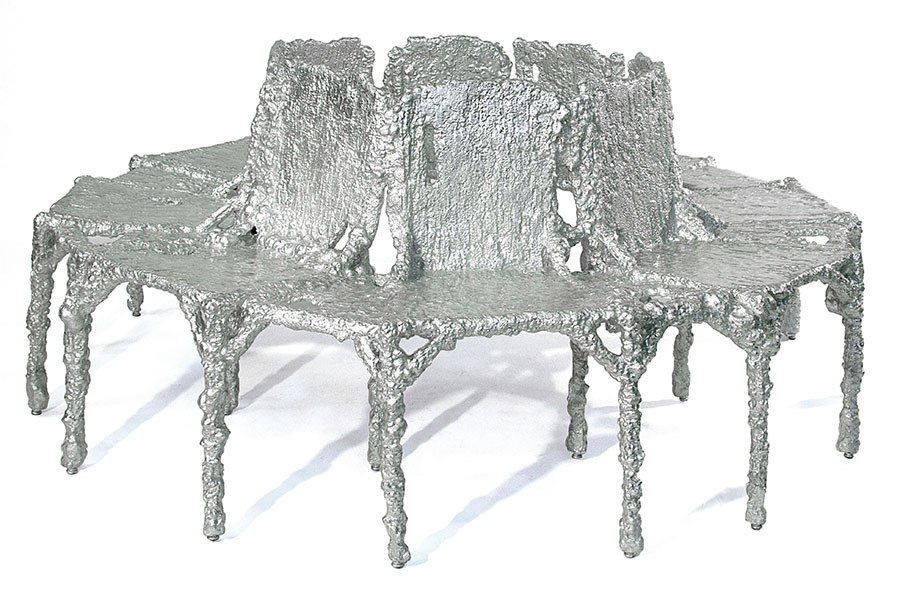
Furniture designer Christopher Schanck has set up a home-cum-studio in Detroit’s Hamtramck.
Chris Schanck
Chris Schanck Schanck’s friend Jack Craig lives just down the street, experimenting in his basement with bronze and beach balls — all under the inquiring eyes of the neighborhood kids. Craig’s backyard is filled with found supplies such as pastel yards of architectural PVC and 100-year-old marble slabs, all of which he liberated from deserted buildings, and all of which serve as inspiration for his next series of work. I’m told Jack also charges a reasonable fee for babysitting.
Through architect friends I learned about Mitch Cope’s Power House Productions which transformed a Banglatown bungalow into a community squash court and squash garden. And the work of Charlie O’Geen, a recent Kresge Fellow who reinvents local dilapidated sites through thoughtful interventions. O’Geen shows with Volume Gallery in Chicago along with Anders Ruhwald, who heads the Cranbrook ceramics department. Anders may have been on summer hiatus, but I still got a peek into his picturesque Cranbrook studio filled with shelves of shapes and textures of clay in various stages of assembly.
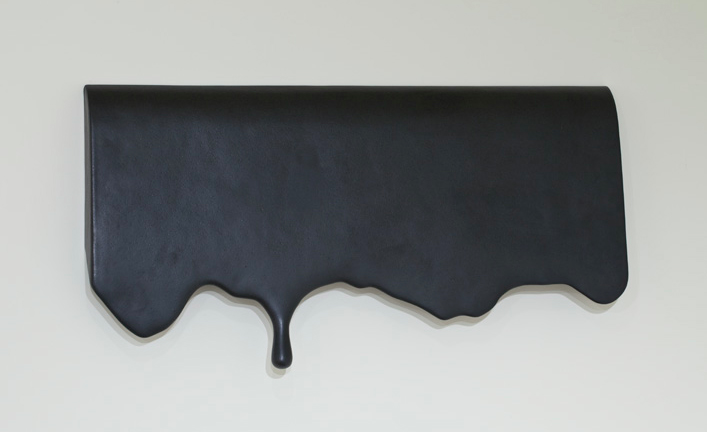
Work by Anders Ruhwald, who heads the Cranbrook ceramics department.
Anders Ruhwald
Half of my visit to Detroit was spent in the rental car of Paul Johnson, a New York-based design dealer and owner of Johnson Trading Gallery. Paul has been rehabilitating Detroit’s Woods Cathedral in Lasalle Gardens. Built in 1926 and designed by local architects Carey & Esselstyn in a style that mashes Arts and Crafts with Gothic arches, the building has lived many lives: as a Catholic church, a Pentecostal parochial school, an underground venue for Detroit’s Techno scene, and as a home for vagrants. Johnson bought the property in 2014 for pennies on the square foot and acknowledges no real plan for it. But rumor has it that in 2016 Moran Bondaroff gallery (formerly OH WOW) is slated to take over the space with a year’s worth of programming by curators like Fabiola Alondra and a shop by Printed Matter.
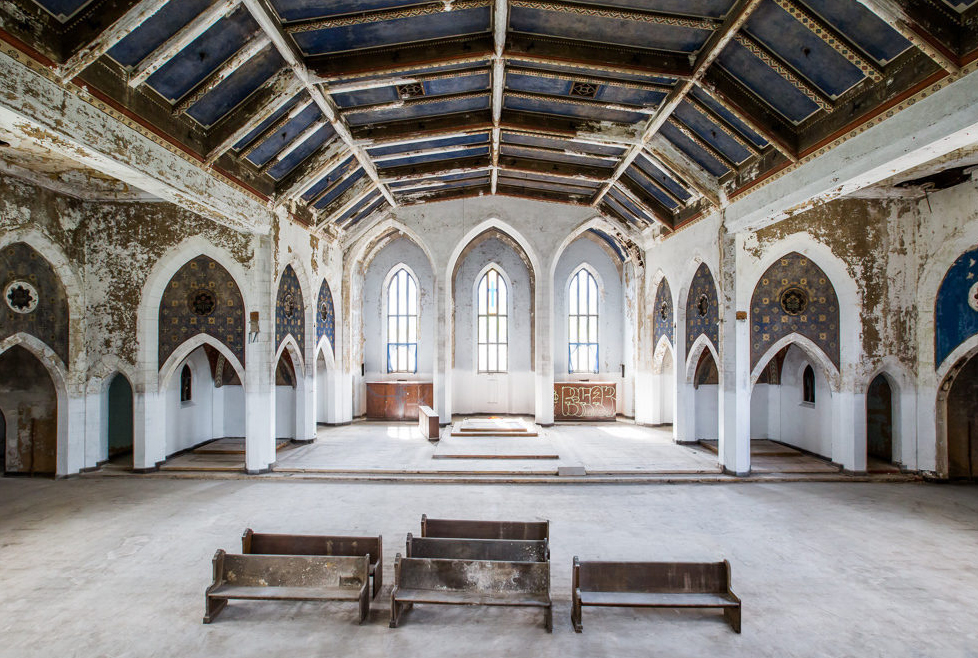
Paul Johnson, a New York-based design dealer and owner of Johnson Trading Gallery, is rehabilitating Detroit’s Woods Cathedral in Lasalle Gardens.
Woods Cathedral
One of the buildings that truly captured my attention was the old Wurlitzer factory. Built in 1926, it’s a slim jewel of a building with an ornate façade as intricately musical as its previous owner’s name, Wendy Wurlitzer. The young design and development firm Ash NYC bought it last year. Will Cooper, Ash’s Creative Director, says they are gearing up to transform the looted Egyptionate interior into a hotel, restaurant, and retail space. Their plan is to use Detroit’s own resources for the project, fueling local business and the city’s industrial facilities. Ash has used this local development model before and will again in their next hotel in New Orleans.
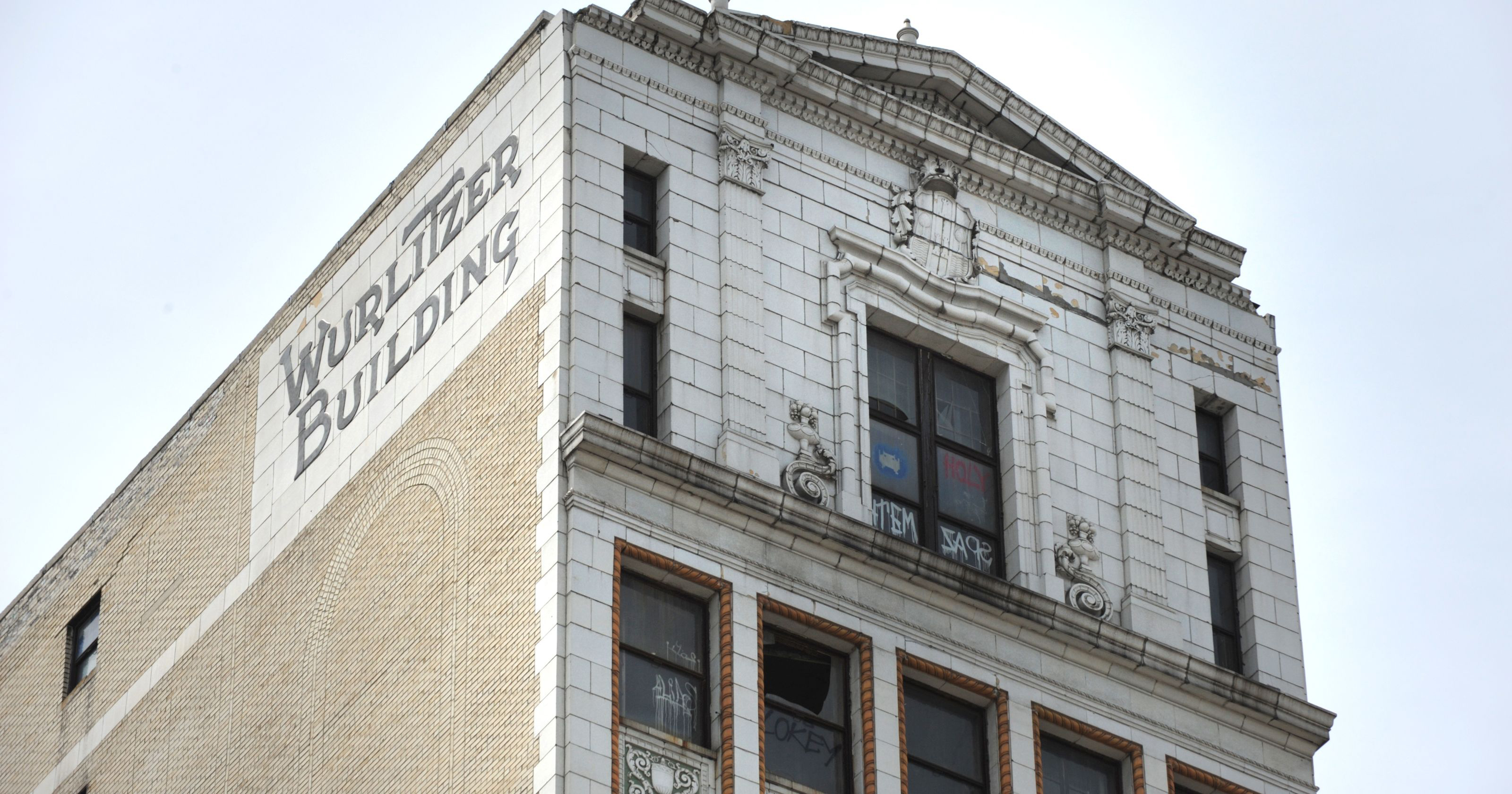
Design and development firm Ash NYC plan to transform the old Wurlitzer factory building into a hotel, restaurant, and retail space.
Wurlitzer building
But perhaps Detroit’s sleeping giant is the architect Ron Castellano. Castellano’s main playing field is New York’s Lower East Side, where he has overseen the sensible renovations of historic landmarks like the Forward Building. Over the past year or two, he has quietly been in the process of acquiring properties throughout Detroit, including two former school buildings, two abandoned churches, a former movie theater, a grocery store, and the looming Kiefer Hospital Complex (all in all almost a million square feet). Ron is planning to rebuild — and reinvigorate — entire city blocks, playing the long game, endeavoring to reanimate depressed neighborhoods, step by step, through the visions of the local residents who’ve remained in the area. It’s a valiant effort. And one of many more being born in contemporary Detroit. I will definitely be back soon. And recommend that you join me.
Yours truly, Pepa
Pepa Shores is a trusted aesthete and design doyenne who irregularly pens reports for PIN–UP from her various travels around the world.


